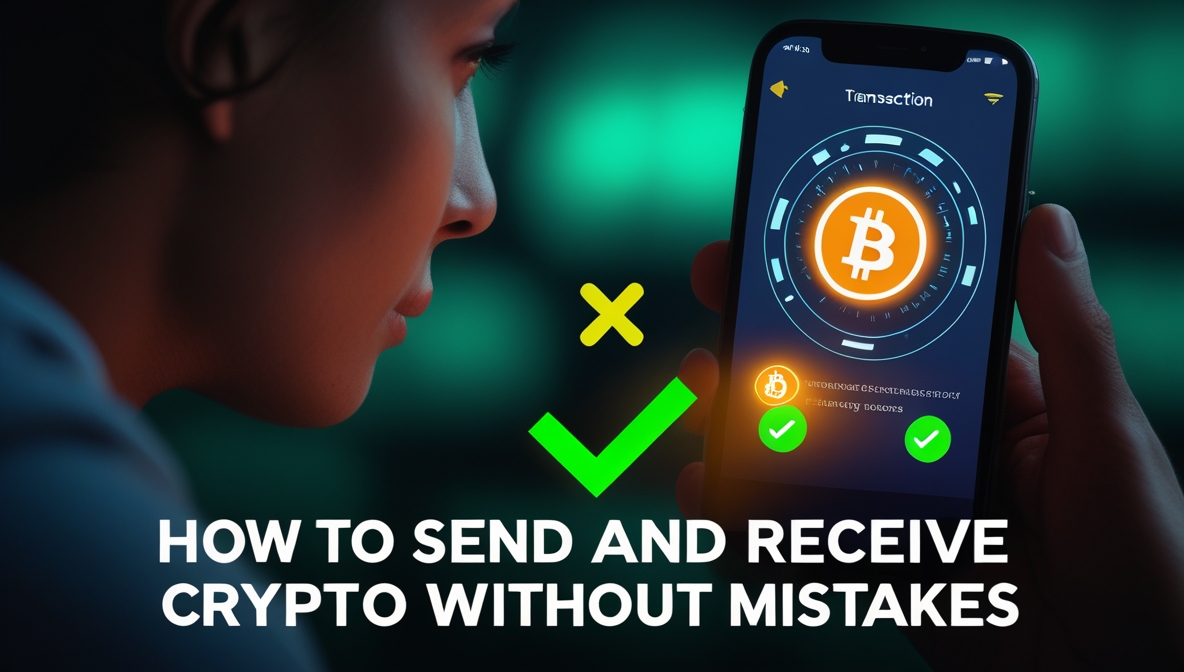Here is How to Send and Receive Crypto Without Mistakes in 2026 ,If you’re new to crypto, one of the scariest moments is hitting “Send” on your first transaction.
What if you copy the wrong address?
What if you lose your money forever?
Unlike traditional banks, crypto transactions cannot be reversed. Once you send, it’s gone. That’s why learning how to send and receive crypto safely is one of the most important skills every beginner must master.
In this guide, you’ll learn the step-by-step process, common mistakes to avoid, and pro tips to make sure you never lose your coins.
Step 1: Understand Wallet Addresses
- A wallet address is like your bank account number.
- Every crypto has a unique format (BTC, ETH, SOL, etc.).
- Example:
- Bitcoin address:
bc1qxy... - Ethereum address:
0xabc123...
- Bitcoin address:
Important: If you send Bitcoin to an Ethereum address, your funds are lost forever. Always double-check the network.
Step 2: Copy-Paste Carefully
- Always use copy & paste (never type an address manually).
- Double-check the first and last 4 characters of the wallet.
- Use the “copy” button inside the app to avoid mistakes.
Step 3: Test With a Small Amount
- Before sending a large amount, send a test transaction.
- Example: If sending $500, try $5 first.
- Once the test arrives safely, send the full amount.
Step 4: Choose the Right Network
Many cryptos exist on multiple blockchains. Example:
- USDT can exist on Ethereum (ERC20), Binance Smart Chain (BEP20), or Tron (TRC20).
If you send to the wrong network, your funds may be unrecoverable.
Always check that both the sender and receiver wallets support the same network.
Step 5: Add the Correct Memo/Tag (If Needed)
Some exchanges (like Binance, KuCoin, etc.) require a memo/tag when sending certain coins like XRP or XLM.
Forgetting the memo/tag can cause funds to be lost or delayed.
Step 6: Wait for Confirmations
After you send, the transaction needs to be confirmed on the blockchain.
- Bitcoin: 10–30 minutes.
- Ethereum: 1–5 minutes.
- Solana: A few seconds.
Be patient — don’t resend in panic.
Step 7: Keep Records
- Save the transaction ID (TxID).
- This helps track the transaction if there are delays.
- You can use explorers like:
- Blockchain.com for Bitcoin
- Etherscan.io for Ethereum
Common Mistakes Beginners Make
Sending to the wrong address
Choosing the wrong network
Forgetting memos/tags
Sending large amounts without testing
Panicking when confirmations take time
Pro Tips to Stay Safe
- Use a hardware wallet (Ledger, Trezor) for large amounts.
- Turn on 2FA on exchanges.
- Always verify addresses on official apps, not random websites.
- Never share your private keys or seed phrases.
Sending and receiving crypto doesn’t have to be scary. If you copy carefully, test small amounts, use the right network, and stay patient, you’ll avoid the most common mistakes.
Remember: In crypto, you are your own bank. Double-check everything, and you’ll never lose money by accident.
At BullRunHat.com, we help beginners navigate the crypto bull run safely and confidently.




